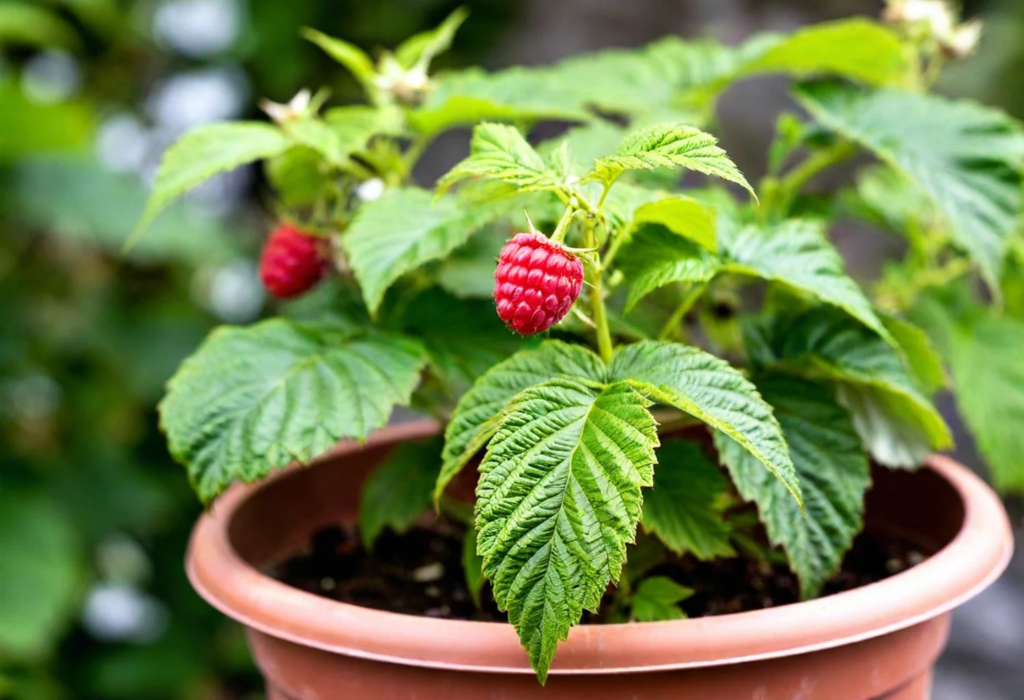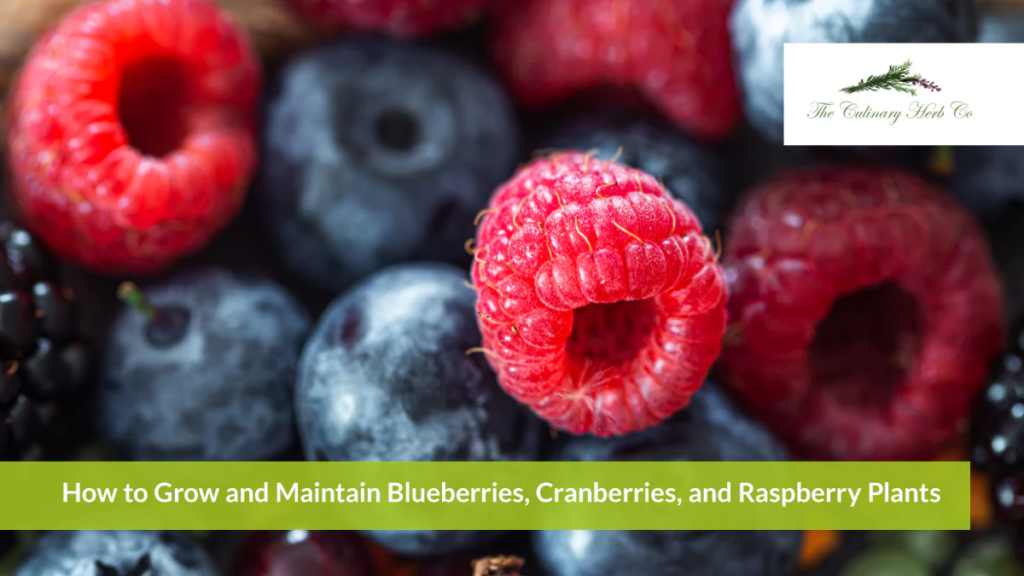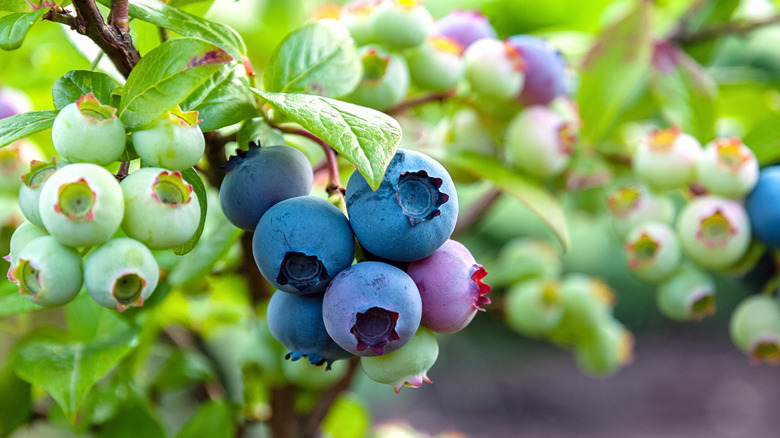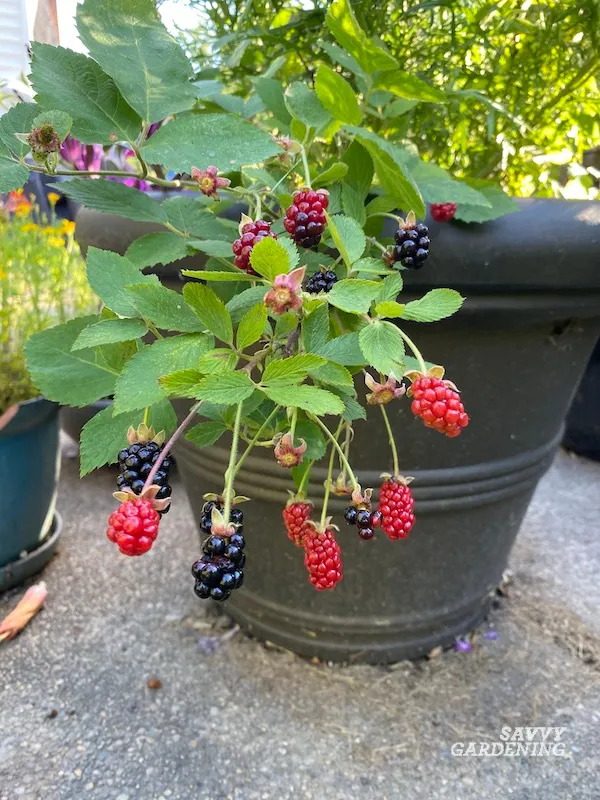Growing berries in pots is a great way to enjoy fresh, home-grown fruit, even if you have limited space. Raspberries, blueberries, and currants are all excellent choices for container gardening, providing year-round rewards with the right care and setup. Here’s how to successfully grow each of these delicious fruits in pots.
Raspberries
Raspberries are packed with vitamins, antioxidants, and flavor, making them a worthwhile addition to any garden. When growing raspberries in pots, choose compact, container-friendly varieties, which typically grow to about 3 feet tall. These smaller types don’t need supports, unlike traditional varieties with long canes.
- Choosing a Pot: Use a container that holds at least 30 liters (8 US gallons) of potting mix. This size provides ample space for both the roots and the canes to spread out.
- Soil Requirements: Raspberries prefer slightly acidic soil. A mixture of 80% all-purpose potting mix and 20% ericaceous (acid-loving) mix, like rhododendron or azalea mix, works well.
- Planting: Gently tease the roots if they’re tightly coiled, and plant the raspberry at the same depth it was in its nursery pot. After planting, water thoroughly to settle the soil.
- Mulching: Add organic mulch, such as bark chippings, to help keep the roots cool and retain moisture. As the mulch decomposes, it will also improve soil structure.

How to Grow Raspberries, Currants, and Blueberries in Pots
Growing berries in pots is a great way to enjoy fresh, home-grown fruit, even if you have limited space. Raspberries, blueberries, and currants are all excellent choices for container gardening, providing year-round rewards with the right care and setup. Here’s how to successfully grow each of these delicious fruits in pots.
Raspberries
Raspberries are packed with vitamins, antioxidants, and flavor, making them a worthwhile addition to any garden. When growing raspberries in pots, choose compact, container-friendly varieties, which typically grow to about 3 feet tall. These smaller types don’t need supports, unlike traditional varieties with long canes.
- Choosing a Pot: Use a container that holds at least 30 liters (8 US gallons) of potting mix. This size provides ample space for both the roots and the canes to spread out.
- Soil Requirements: Raspberries prefer slightly acidic soil. A mixture of 80% all-purpose potting mix and 20% ericaceous (acid-loving) mix, like rhododendron or azalea mix, works well.
- Planting: Gently tease the roots if they’re tightly coiled, and plant the raspberry at the same depth it was in its nursery pot. After planting, water thoroughly to settle the soil.
- Mulching: Add organic mulch, such as bark chippings, to help keep the roots cool and retain moisture. As the mulch decomposes, it will also improve soil structure.
Currants (Red, White, and Black)
Currants thrive in pots and are especially attractive when trained into compact forms like cordons or fans. Red and white currants are ideal for containers, while blackcurrants tend to be more vigorous and better suited for larger spaces.

- Choosing a Pot: Use a container that’s at least 18 inches (45 cm) in diameter. A soil-based potting mix is best for currants.
- Planting: Plant currants similarly to raspberries, ensuring the root ball is at the same level as in its nursery pot. Add a layer of bark mulch to finish.
- Care: Currants prefer a sunny, sheltered location. Keep the soil moist during the growing season, but be cautious of overwatering during autumn and winter, as waterlogged soil can lead to root rot. Elevate the container slightly to ensure good drainage.
- Feeding: During the growing season, use a liquid tomato feed every few weeks or add slow-release fertilizer in spring.
Blueberries
Blueberries are a favorite fruit for many, known for their sweet taste and vibrant color. They’re also a fantastic freezer staple, perfect for smoothies, desserts, or snacking throughout the year.
- Soil Requirements: Blueberries require acidic soil with a pH between 4.0 and 5.5. Use an ericaceous mix, which you can enhance with 30-40% garden compost or composted bark.
- Potting: Choose a large container that allows for root expansion. As the plant matures, it may need re-potting into a larger container, but it’s also essential to refresh the top layer of soil each year.
- Watering: Water blueberries with rainwater whenever possible, as tap water is often too alkaline for acid-loving plants. During the growing season, feed them every three weeks with a specialized plant food for acid-loving plants.
- Protection from Birds: Birds love blueberries almost as much as we do. Protect your plants by draping netting over a frame or cane teepee to keep the birds away while allowing air circulation.

General Tips for All Berries
- Sunlight: All these berries thrive in sunny locations. Ensure they receive at least 6 hours of sunlight per day.
- Winter Care: If you live in an area with cold winters, move your pots to a sheltered spot or insulate them with materials like bubble wrap to protect the roots from freezing.
- Regular Care: Water your berry plants regularly to keep the soil moist, but always ensure good drainage to prevent root rot. During the growing season, fertilize with appropriate feeds to promote healthy growth and fruiting.
By following these tips, you can enjoy a thriving container garden filled with delicious raspberries, currants, and blueberries, all of which provide fresh, nutritious fruit for years to come.
- Choosing a Pot: Use a container that’s at least 18 inches (45 cm) in diameter. A soil-based potting mix is best for currants.
- Planting: Plant currants similarly to raspberries, ensuring the root ball is at the same level as in its nursery pot. Add a layer of bark mulch to finish.
- Care: Currants prefer a sunny, sheltered location. Keep the soil moist during the growing season, but be cautious of overwatering during autumn and winter, as waterlogged soil can lead to root rot. Elevate the container slightly to ensure good drainage.
- Feeding: During the growing season, use a liquid tomato feed every few weeks or add slow-release fertilizer in spring.
Blueberries
Blueberries are a favorite fruit for many, known for their sweet taste and vibrant color. They’re also a fantastic freezer staple, perfect for smoothies, desserts, or snacking throughout the year.
- Soil Requirements: Blueberries require acidic soil with a pH between 4.0 and 5.5. Use an ericaceous mix, which you can enhance with 30-40% garden compost or composted bark.
- Potting: Choose a large container that allows for root expansion. As the plant matures, it may need re-potting into a larger container, but it’s also essential to refresh the top layer of soil each year.
- Watering: Water blueberries with rainwater whenever possible, as tap water is often too alkaline for acid-loving plants. During the growing season, feed them every three weeks with a specialized plant food for acid-loving plants.
- Protection from Birds: Birds love blueberries almost as much as we do. Protect your plants by draping netting over a frame or cane teepee to keep the birds away while allowing air circulation.
General Tips for All Berries
- Sunlight: All these berries thrive in sunny locations. Ensure they receive at least 6 hours of sunlight per day.
- Winter Care: If you live in an area with cold winters, move your pots to a sheltered spot or insulate them with materials like bubble wrap to protect the roots from freezing.
- Regular Care: Water your berry plants regularly to keep the soil moist, but always ensure good drainage to prevent root rot. During the growing season, fertilize with appropriate feeds to promote healthy growth and fruiting.
By following these tips, you can enjoy a thriving container garden filled with delicious raspberries, currants, and blueberries, all of which provide fresh, nutritious fruit for years to come.
